Sightseeing around Stellenbosch
Stellenbosch, in short, is a delightful place to visit, with a number of attractions visitors can see while sightseeing around town. Tall oak trees dapple the light that falls across the old streets.
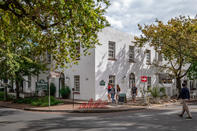
Immaculately restored Cape Dutch buildings seem to sigh with settled contentment from behind their whitewashed walls. Blithe young university students swish past on their bicycles.
Stellenbosch is best explored on foot. When you arrive in town, head to the info centre on Mark (Market) Street. It’s just off the big green commons in the centre of town, called The Braak. There you can pick up a walking-tour booklet to guide you through the city streets.
Historic Buildings
Storefront fashion shows, complete with coffee and rusks encourage the walker to linger, while pretty little B&B’s beckon from the nearby valleys, and dozens of Ye Olde Coffee Shops tempt you with promises of milktart and koeksisters. Stellenbosch is much more than just another stop on the Wine Route, it’s a historical little town with an eye on the future.
A stroll down Dorp Street is a particular highlight and should be tackled by anyone who visits Stellenbosch to see its historic buildings. This was the main thoroughfare in the old days, an extension of the wagon road which lead to Cape Town, and it is blessed with a fine congregation of lovely homes and cottages that date back 300 years.
Many of these buildings are national monuments, and several serve enticing teas on their open verandas. You can also check out the renowned Oom Samie se Winkel, an old-fashioned general dealer that has kept its prices right up to date. There are other notable old buildings all over Stellenbosch, as detailed in the walking tour booklet, such as the NG Moederkerk.
One should spend a few hours strolling past the worker’s cottages built by Herbert Baker for Cecil John Rhodes, or checking out Libertas Parva, the birthplace of Ouma Smuts – the faithful wife of General Jan Smuts. This is the place where the eminent Jan Smuts married his wife, and the family home was so precious to Ouma, that she named the President’s residence in Pretoria ‘Libertas’ in its honour.
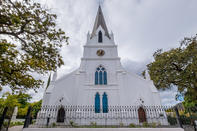
Stellenbosch Museums
There are also several museums in Stellenbosch, including the Burgerhuis House Museum (with magnificent period furniture), the Toy Museum (just behind the info centre) and the superb Village Museum. The latter is a living museum that is housed in four original buildings, each epitomising a different historical epoch.
Staff dressed in period costume bustle around each house, giving the museum a special charm. There is also the well-stocked Rembrandt van Rijn Art Museum, named surreptitiously after the Rembrandt tobacco company.
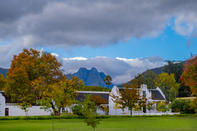
Stellenbosch Botanical Gardens
The Stellenbosch Botanical Gardens is the oldest university botanic garden in South Africa. It is beautifully maintained and includes a Lotus lily/Koi fish pond, Japanese garden, herb garden, three glass houses (tropical, succulent and karoo) as well as an arboretum. The garden serves as an open-air centre for science, training, conservation and recreation.
Stellenbosch Botanical Gardens is home to a large variety of plants, including plants imported from other countries. The garden is definitely a hidden gem in the historical centre of Stellenbosch. Grab a bite to eat or a cup of coffee at Katjiepiering, the restaurant tucked into a black bamboo grove in the garden.
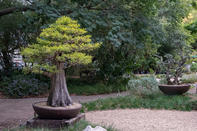
Mountain Warrior Running Event
The Mountain Warrior running event takes place annually in Stellenbosch and is a highlight for many runners across South Africa. The route follows a network of fantastical trails high up where the Hottentots-Holland and Jonkershoek Mountains conjoin, shaping rough peaks and deep ravines, with stunning views over Stellenbosch and Cape Town in the distance.
The trail starts and ends on jeep-tracks, but includes a huge amount of single-track along ridges, through fynbos, past vineyards and crossing open fields. The trails are at high altitude, so beware of changeable weather. The route on Day One must be rated as one of the most challenging and breathtaking days on any trail in South Africa.
Runners will wind their way amidst these famous Stellenbosch summits, passing right beneath the iconic Two Peaks and crossing the formidable Botmaskop. Day Two traverses the steep foothills of Simonsberg, winding through many vineyards and fields of fynbos along single-tracks in areas only accessible during this event. Expect it to be less technical than Day One, but your legs will be glad after a huge outing in the mountains the previous day.
This 2-day, staged trail run is split into a Long Course covering a total of 66 km, with 36 km on Day One and 30 km on Day Two. A Short Course of 30 km covers 15 km per day, and are easily runnable for 80% of the run. There is also a 10 km night run and 8 km fun walk/run.
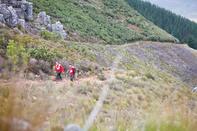
 Stellenbosch is undoubtedly one of the prettiest little towns in South Africa, founded in 1679 and the second oldest town in the country. Th...
Stellenbosch is undoubtedly one of the prettiest little towns in South Africa, founded in 1679 and the second oldest town in the country. Th...